Reims has many distinctions—the cathedral where a thousand years of French kings came to be crowned, the schoolhouse where Germany's World War II surrender was signed, and the cluster of champagne houses with the names of France's best-known bubblies.

I took a day trip to Reims for the first two; never been a real fan of champagne, to the dismay of some of my friends. What I also found was that Reims is a pleasant place for a stroll, with a variety of interesting architecture, history and monuments.
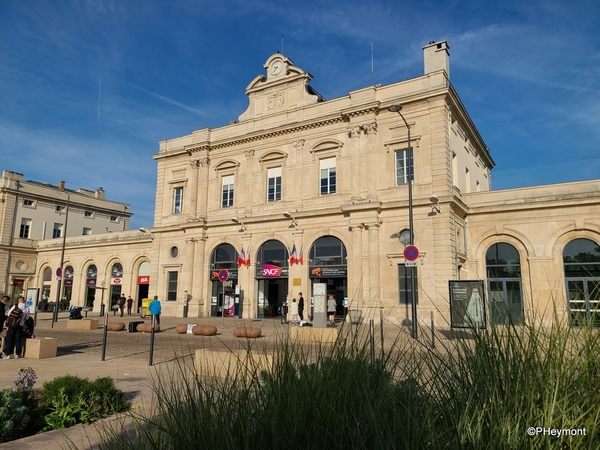
The neo-classical rail station, above, was my starting point. Like the cathedral, it is among the few center-city survivors of World War I bombardment and artillery; Reims was at or near the front through most of the war. The station lost its train shed; the cathedral's restoration was much more complex.
Just outside the station, and armed with a handful of flyers from the Office de Tourisme, I was faced with a choice: walk into the center, or ride the cute €2 bus that circles the center and all the sights I meant to see. The feet won out, as they usually do, at least in the morning, and I began my stroll, passing these well-protected trees.
Walking down the Place Drouet d'Erlon, I found a profusion of eating choices, no doubt increased by pandemic-driven expansion into the street, but a pleasant sight anyway. A few names broke out of the usual mold... I have not seen any evidence that Hemingway visited Reims or drank at the bar, but it is said to have a Cuban theme and cigar store within.
The World War I damage in Reims has given some of its architecture a more modern flavor than would be usual for a town of its age, including the modern-styled Sube 'passage' modeled on its older counterparts. A number of other post WWI buildings are nearby, including the iconic Kodak building.


An ornate survivor of an earlier era, this former opera house was in the process of becoming luxury apartments. Still available for sale, a year later, on the developer's website, if you're interested!


The current Opera of Reims, also known as the Grand Theatre, is not far away; it was built in 1873 and is still an active venue for all kinds of concerts as well as the Opera itself.
Along the way to the Opera House, I passed two notable fountains, one classic in form and the other, well, not. First was the Sube Fountain, near the passage. Originally built early in the 20th century after Auguste Sube, born in Reims, left money for it in his will.
 The base includes basins representing the area's four rivers, but unlike most fountains this one never had water! It's not clear whether no-water was a before or after decision.
The base includes basins representing the area's four rivers, but unlike most fountains this one never had water! It's not clear whether no-water was a before or after decision.
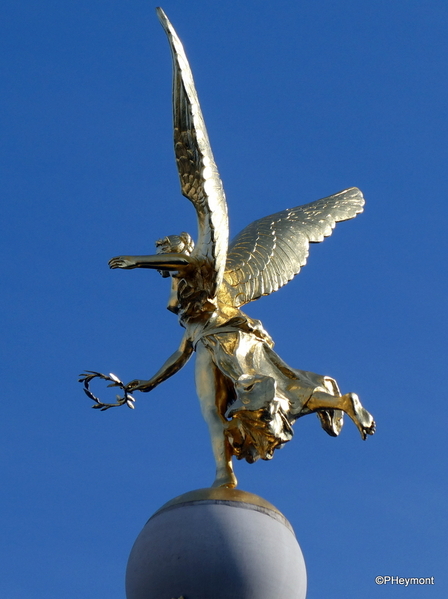
German occupiers removed (and presumably melted) the original bronze statue of Fame that topped the column. In 1989, the new statue, called La Gloire, or Glory, was installed. The other fountain, the 'ball fountain' was installed in 1977. It's also referred to as the Solidarity Fountain after a local union named it that in honor of Poland's Solidarnosc union in 1983.

Taking a step back in time from that, I stopped at the Saint-Jacques church, a plain but impressive 12th-century church hiding behind an almost aggressivly blah facade.
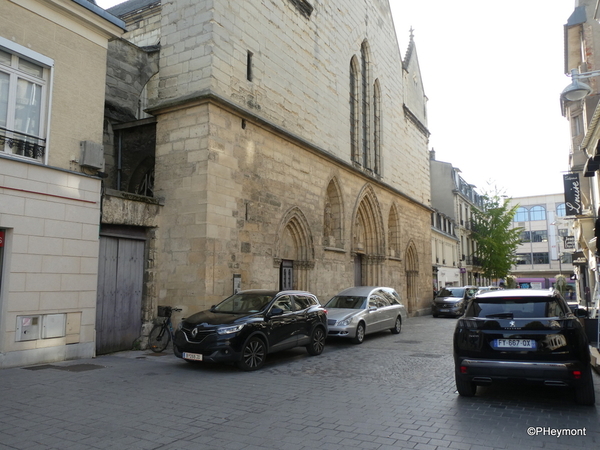
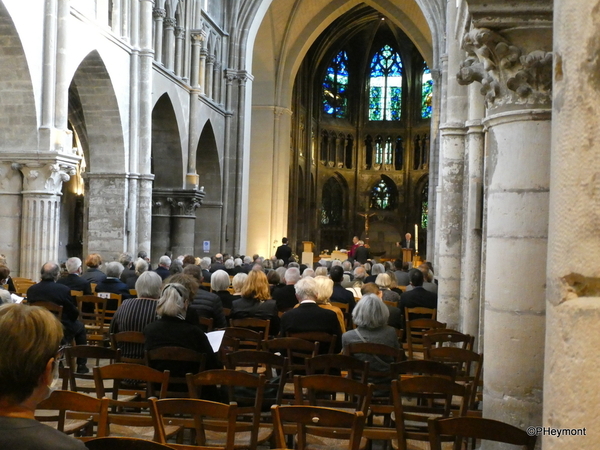
Moving on to a main shopping street, I found impressive late 19th-century department stores and some smaller stores with interesting facades.



Some of the buildings really 'pushed out the boat' for exterior ornamentation. Note the 'retail angels' tying up packages and making ledger entries. Perhaps it suggests that shopping there was divine...
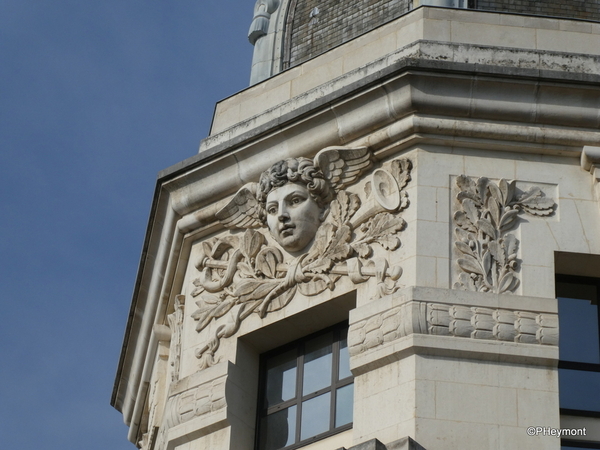
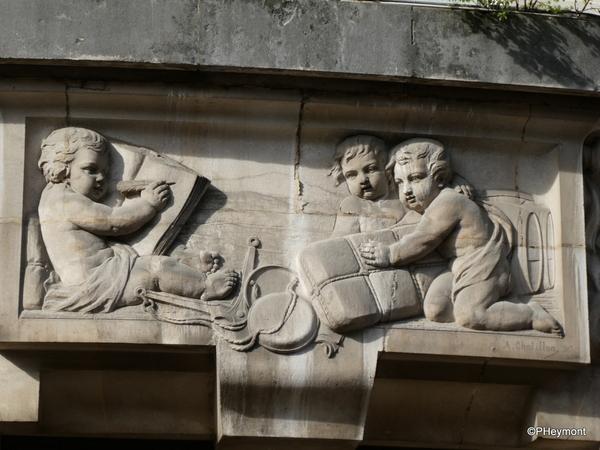
And a pair of handsome corner towers, one on a large department store whose details are just above, and the other for the Credit Lyonnais bank.


Around the corner, and hard by the Cathedral, the impressive facade of the courthouse, inscribed 'LEX' over the door, and a possibly familiar statue of Joan of Arc. The 1895 statue commemorates her arrival in Reims for the coronation of Charles VII. In 1920, when she was canonized, copies of it were installed in Paris, Strasbourg and Washington, DC.
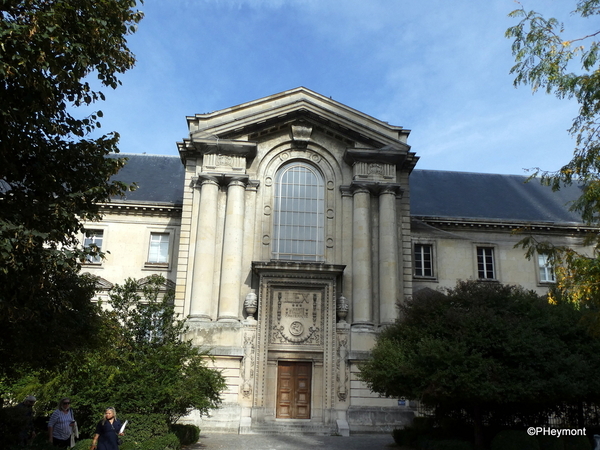

Moving on from there, and passing evidence of another enduring cultural theme or transplant, I visited the Basilica of Saint Remi, named for Reims' other especially significant saint.
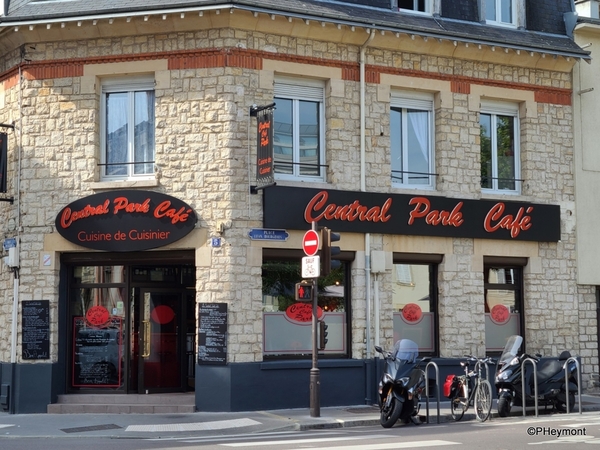

Saint Remi is credited with changing the course of French and European history by converting the powerful Frankish king, Clovis, to Christianity. From this stature, it's hard to view Remi as a humble proselytizer and Clovis as a powerful king, but that's the story. Together, church and king united most of today's France into a single kingdom.
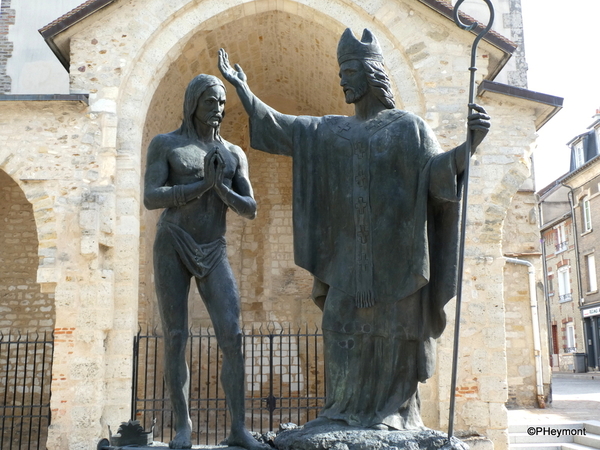
Near St. Remi, one of a group of concrete blocks used as barriers for traffic and other purposes. As I was taking the picture, a child on a bike told me that they are called "Légos officiels."
On my way back from Saint-Remi, I passed a few of the champagne houses, all of which offer tours and tastings of one sort or another. This is the home of Veuve Clicquot, who built it in 1822 to house a rapidly growing business. The Widow Clicquot was one of the first women anywhere to run an international business after she was widowed at 27. It was rebuilt in Louis XIII style in 1920, and houses the company's offices; production was moved out of town a number of years ago.
Also built in the 1920s, the Art Deco-styled central market, replacing a building destroyed in the war. Its unusual parabolic roof allowed unobstructed spaces within and innovative methods of construction. Unfortunately, the innovative construction was also a bit slipshod, and by 1942, pieces of roof were falling and a big mesh had to be hung. In 1988, the building was essentially abandoned and the market moved to a huge tent on its parking lot.
While the city was considering just demolishing it, Jack Lang, then Minister of Culture, sided with the preservationists and designated it a Historic Monument. The city then considered other uses, including a museum or library, but eventually it was decided to return it to use as a market, to build back better. It re-opened in 2012. The restoration of the central halls received the 2015 European Union Cultural Heritage Prize from the European Commission.
Unfortunately, I wasn't there on a market day, so was only able to admire the building and the porcelain-brick stalls. The yellow color, by the way, is no accident; the tint is produced by the glass panels to help protect the produce.
An older market place is marked by this structure, which stands on what was once the Roman east-west road through the Roman city; the north-south road passed through the arches, and the forum and market were at the intersection.
A walk back to the station on the 'wet' side of the long promenade whose trees I walked among at the beginning of my ramble, and a chance to see some historic equipment parked at a track in the station.
Just past the station, and a couple of blocks walk, I had a chance to visit the somewhat disappointing Surrender Room museum before my train back to Paris. Near the school, I encountered a sign with what may be good general advice. Or, at some moments, perhaps not.

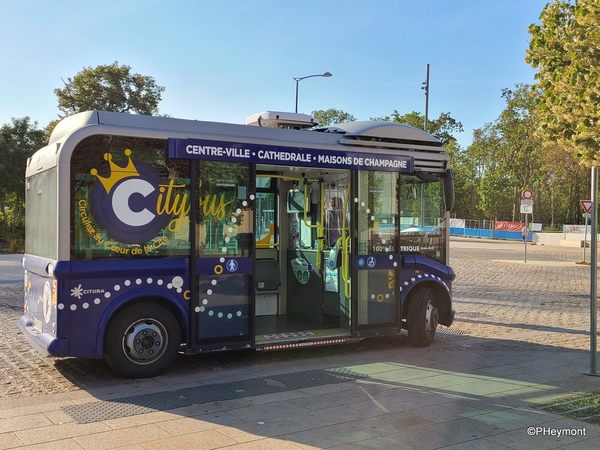



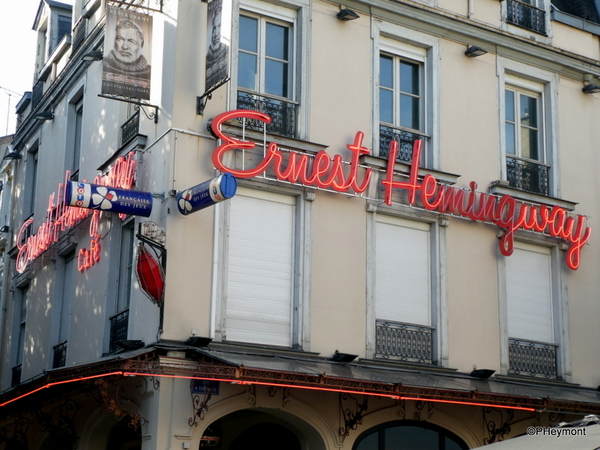



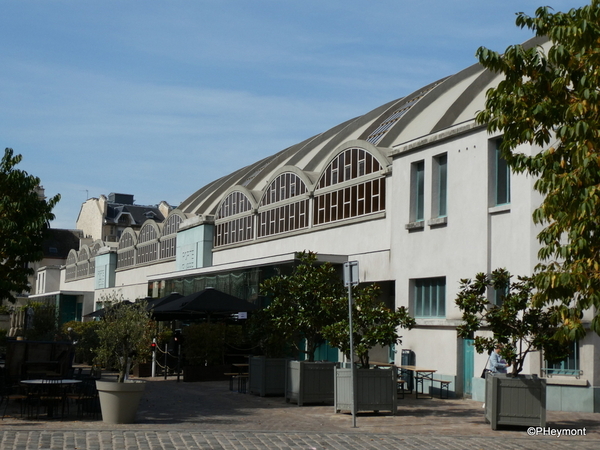






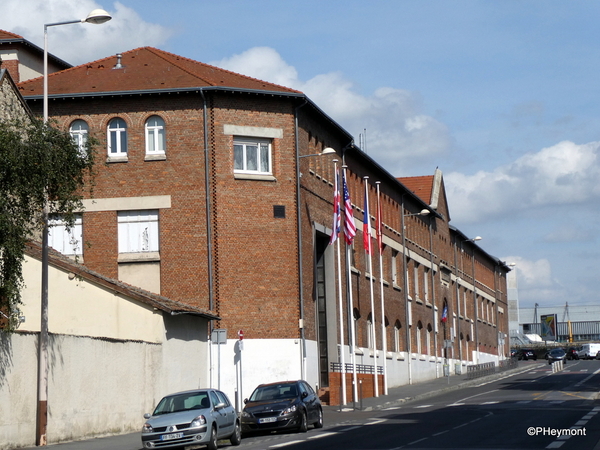



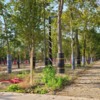


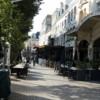




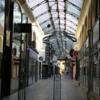







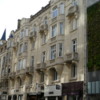
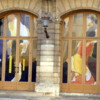




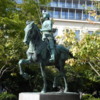

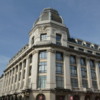


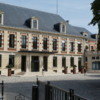


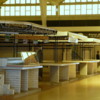
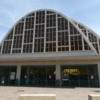

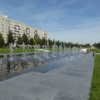
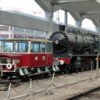

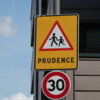

Comments (0)